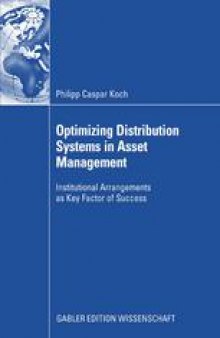 جزییات کتاب
جزییات کتاب
The asset management industry in Germany has been increasingly facing the challenge to use measures to also optimize its distributions systems as means for securing competitive advantage. Therefore, this book falls back on new institutional economics approaches of management science to outline with a model-shaping intent the way in which a deliberate choice and design of varying “institutional arrangements" operates as a device for optimizing net inflows from private investors. The results of a comparative multi-case study (incl. Deka, Julius Bär, Fidelity) are used to demonstrate as how in a significantly changing distribution landscape a systematic choice and design of a "partnership"-type of distribution system seems to provide the potential for a sustained improvement in distribution effectiveness. In this context, this inquiry is also able to discuss the impact of single “success factors” or management levers. The discussion offers a perspective on the way in which various information-processing and motivating means (such as branding, monitoring, or incentives) have to be applied in the attempt to strengthen the net inflow streams from private investor through the distribution channel of banks.




 دانلود کتاب
دانلود کتاب

 جزییات کتاب
جزییات کتاب

 این کتاب رو مطالعه کردید؟ نظر شما چیست؟
این کتاب رو مطالعه کردید؟ نظر شما چیست؟
